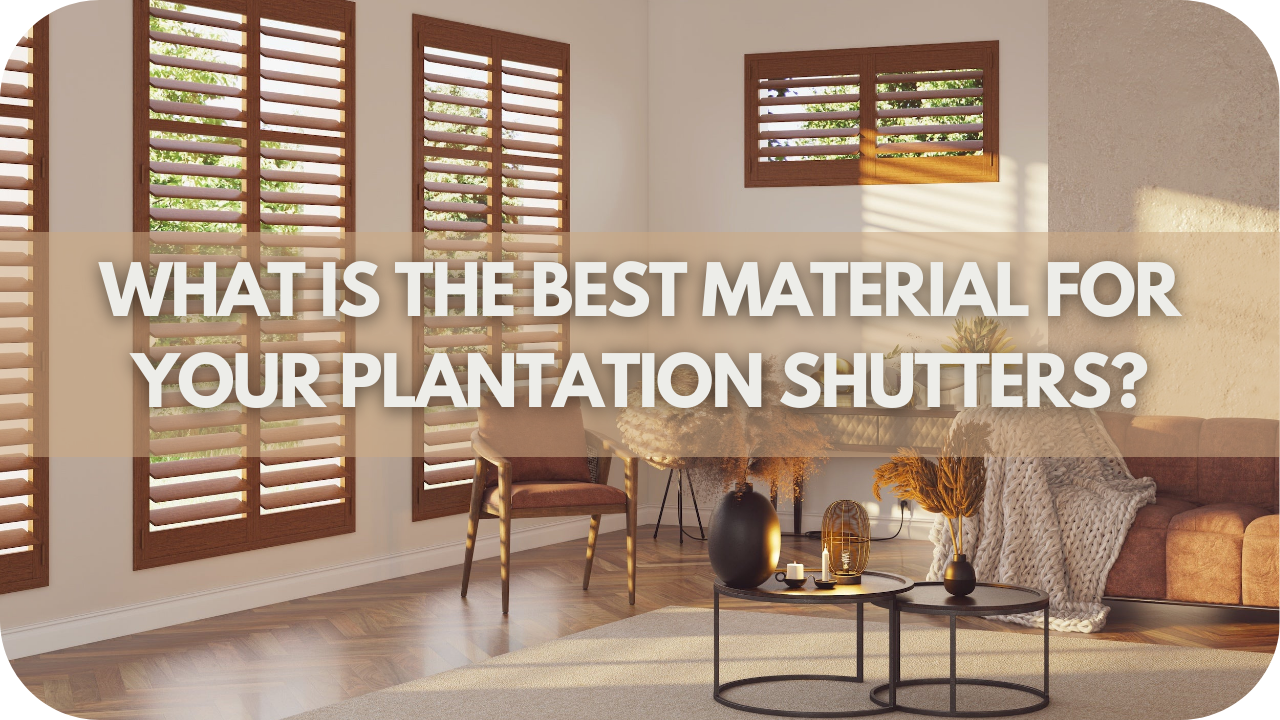Choosing the suitable material for your plantation shutters can be overwhelming, with many options.
Picking the wrong material could lead to shutters that warp, fade, or require constant maintenance, ultimately costing you more in the long run.
In this article, we’ll explore the best materials for plantation shutters—wood, composite, vinyl, and aluminium—to help you make an informed decision that ensures durability, style, and ease of care for your home.
What Is The Best Material For Your Plantation Shutters?
The best material for plantation shutters depends on your needs. Wood offers a classic look, composite is durable and moisture-resistant, vinyl is cost-effective and ideal for humid areas, while aluminium provides modern aesthetics and strength.
Each material has benefits, so the best choice depends on your home’s style, location, and budget.
Popular Plantation Shutter Materials
Choosing the suitable material for your plantation shutters is crucial. From wood’s timeless elegance to vinyl’s practicality, let’s explore the popular options and discover what best suits your home.
1. Wooden Shutters
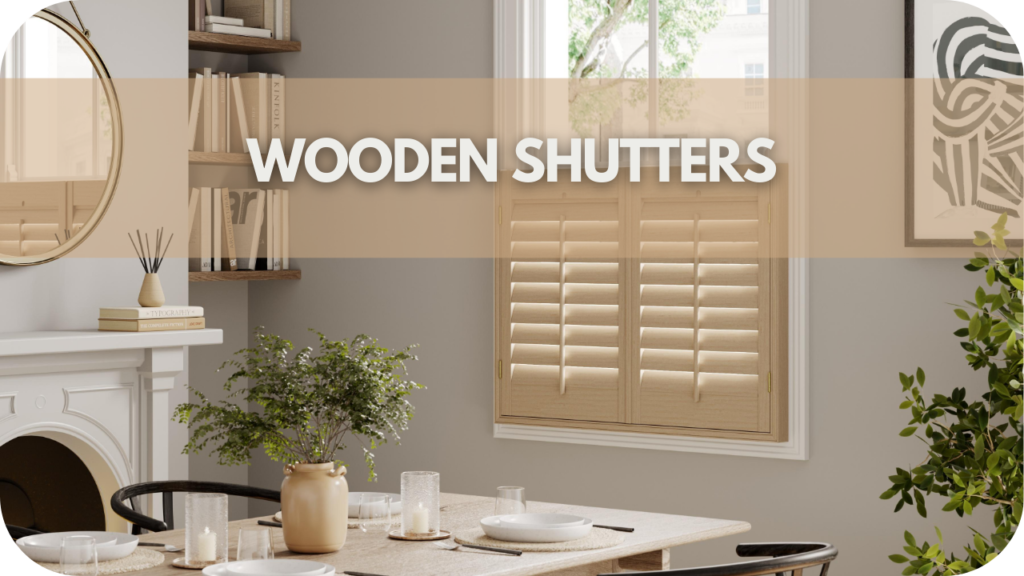
Wooden shutters are the gold standard for plantation shutters. They offer a blend of natural beauty and robust durability. Made from high-quality hardwoods like basswood or cedar, they bring a touch of elegance and warmth to any space.
Wood’s fine grain and rich texture can be customised with various stains and finishes, allowing them to match your interior décor seamlessly.
Beyond aesthetics, wooden shutters are known for their longevity. They are solid and resistant to warping, making them ideal for larger window spans. Additionally, their insulating properties help regulate indoor temperatures, contributing to energy efficiency in your home.
However, wooden shutters require regular maintenance to preserve their appearance, especially in areas with high humidity. They are best suited for rooms with minimal moisture exposure, such as living areas and bedrooms.
While they may be more expensive than other materials, the investment in wooden shutters pays off with their timeless appeal and durable performance. Wooden shutters are an excellent choice if you’re looking for a premium, classic look.
2. MDF (Medium-Density Fibreboard) Shutters
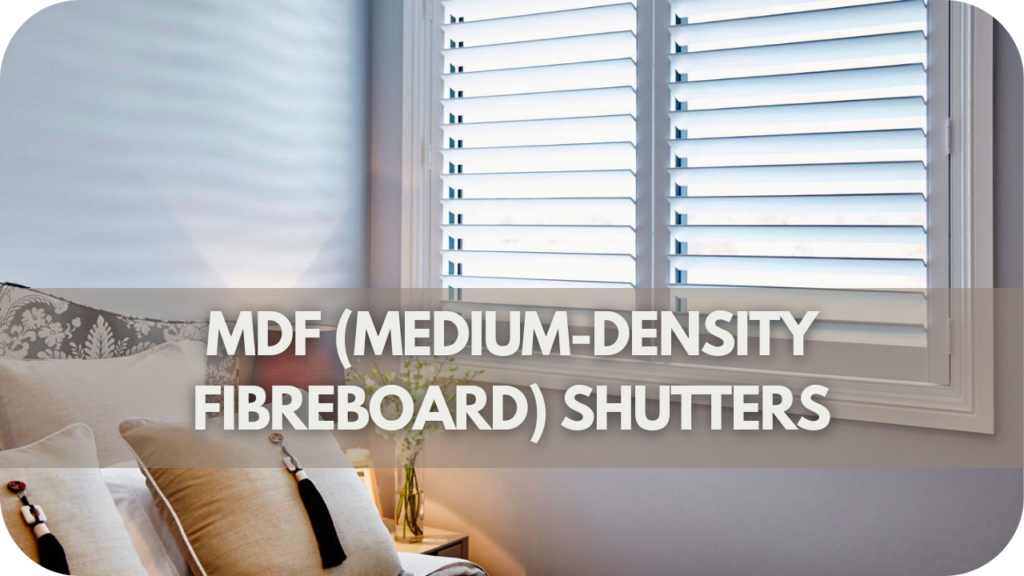
MDF (Medium-Density Fibreboard) shutters offer a budget-friendly alternative to solid wood without sacrificing durability.
Constructed from engineered wood fibres, MDF shutters are known for their strength and stability, making them resistant to warping and cracking. These shutters are often coated with a smooth, durable finish, which gives them a polished look that closely mimics the appearance of natural wood.
One of the standout features of MDF shutters is their affordability. They provide a cost-effective option for homeowners who want the look of wood shutters without the higher price tag. MDF shutters are also easy to maintain, requiring just a simple wipe-down to keep them looking fresh.
However, MDF shutters are heavier than other materials, which can limit their use on oversized windows. They are also less moisture-resistant than vinyl or composite options, making them less suitable for high-humidity areas like bathrooms or kitchens.
3. PVC (Polyvinyl Chloride) Shutters
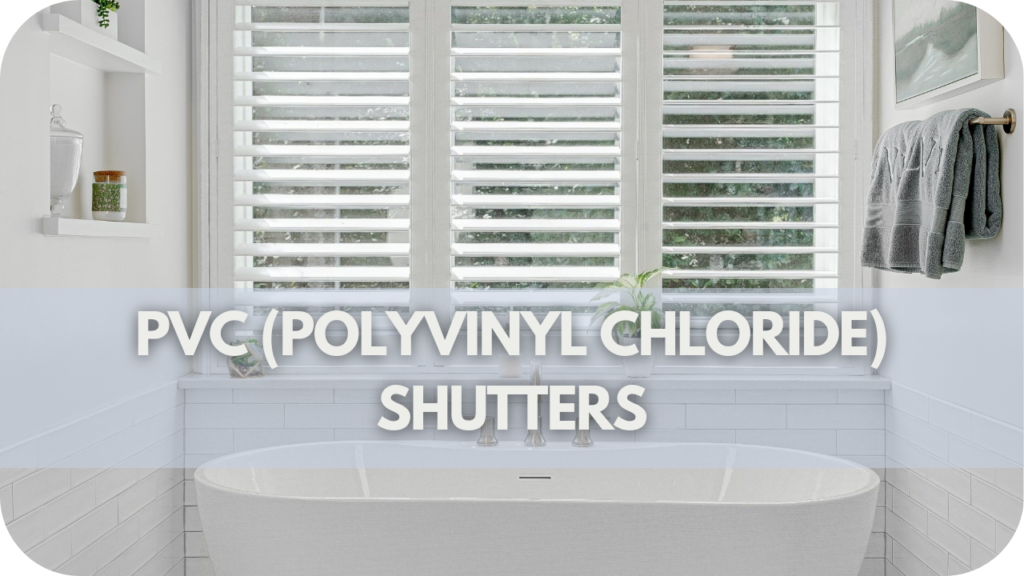
PVC (Polyvinyl Chloride) shutters are popular with homeowners seeking practical and durable window covering. Made from synthetic plastic, PVC shutters are highly moisture-resistant and ideal for bathrooms, kitchens, and other high-humidity areas.
Unlike wood, PVC will not warp, crack, or swell when exposed to water, ensuring long-lasting performance in challenging environments.
One key advantage of PVC shutters is their low maintenance. They are easy to clean, requiring only a quick wipe with a damp cloth to keep them looking fresh. PVC shutters are also lightweight, making them suitable for various window sizes and configurations. Their durability means they can withstand daily wear and tear, making them an excellent choice for busy households.
While PVC shutters offer many practical benefits, they may have a different aesthetic appeal than wooden shutters. The material can sometimes lack the warmth and texture of natural wood, although modern PVC shutters are available in various finishes that closely resemble wood.
PVC shutters are a top contender for those prioritising durability, moisture resistance, and easy upkeep.
4. Composite Shutters
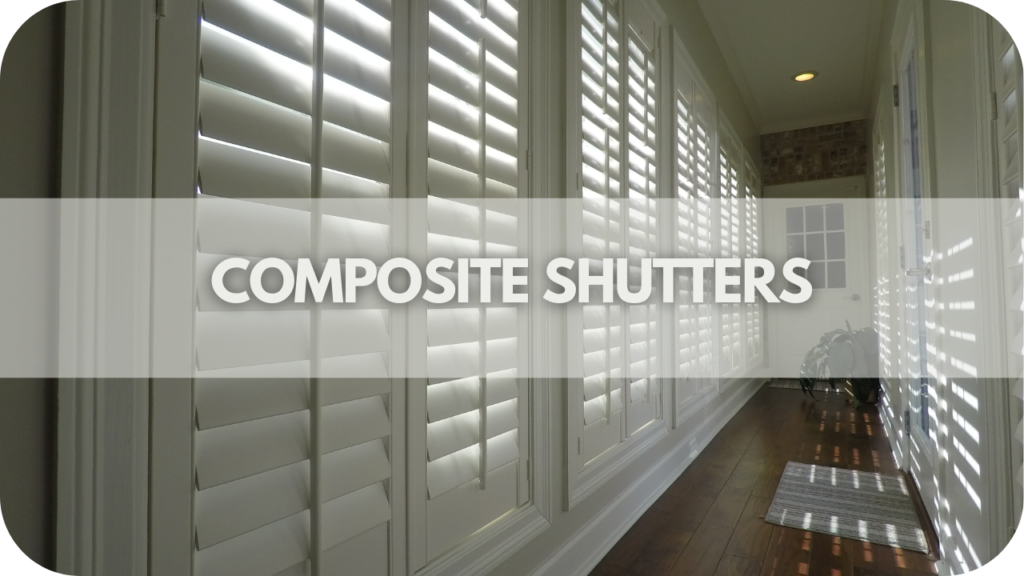
Composite shutters, often engineered wood or faux wood shutters, offer a robust and versatile option for plantation shutters. Constructed from a mix of wood and synthetic materials, composite shutters combine the strength of wood with the durability of modern polymers, making them highly resistant to moisture, warping, and cracking.
One of the standout features of composite shutters is their ability to mimic the look of natural wood while offering enhanced durability. They are available in various finishes and colours, allowing homeowners to achieve the classic appearance of wooden shutters without the associated maintenance.
Composite shutters are particularly well-suited for areas with high humidity, such as bathrooms and kitchens, where traditional wood might be prone to damage. They are also easy to clean, requiring only a simple wipe-down to maintain their appearance.
While composite shutters are slightly more expensive than PVC options, they balance cost and quality. They provide the aesthetic appeal of wood with added resilience. Composite shutters are an excellent choice for those seeking a long-lasting, low-maintenance option with the look of natural wood.
Choosing The Right Material for Your Needs
Selecting the suitable material for your plantation shutters is a critical decision that affects your home’s functionality and aesthetics. The table below summarises the best options based on different needs:
| Material | Best For | Key Benefits | Considerations |
| Wooden Shutters | Living rooms, dining rooms, bedrooms | Timeless elegance, natural warmth, customisable finishes | Requires regular maintenance, not suitable for high-humidity areas |
| PVC Shutters | Kitchens, bathrooms, laundry rooms | Highly moisture-resistant, durable, easy to maintain | It may lack the natural texture of wood, but modern finishes can mimic wood |
| Composite Shutters | Most rooms, including those with higher humidity | Combines wood’s aesthetic appeal with enhanced durability and moisture resistance | Slightly more expensive than PVC, it offers a good balance of cost and quality |
| MDF Shutters | Bedrooms, home offices, low-traffic areas | Cost-effective, mimics the look of wood | Heavier, less moisture-resistant, best kept away from humid environments |
FAQs
1. Which material is best for durability?
Faux wood and composite materials are generally more durable and resistant to warping, cracking, or fading than natural wood. These options are well-suited for high-traffic areas and rooms with variable humidity.
2. How do materials affect energy efficiency?
All plantation shutters provide insulation, but solid wood and high-quality composite options offer better energy efficiency. By reducing heat transfer through windows, they help keep rooms warmer in winter and cooler in summer.
3. Is there a significant difference in maintenance?
Wood shutters require periodic dusting and occasional refinishing. Faux wood and composite shutters are easier to maintain, usually needing a simple wipe-down with a damp cloth.
4. Are there eco-friendly options available?
Yes, some composite and faux wood shutters are made from recycled materials and are a more sustainable than traditional wood.
Conclusion
Consider your home’s specific needs and style when choosing the best material for your plantation shutters. Wood, PVC, composite, or MDF each offers unique benefits.
Contact us at Into Blinds Melbourne for expert advice and a tailored solution. Let’s help you find the perfect shutters for your home.

